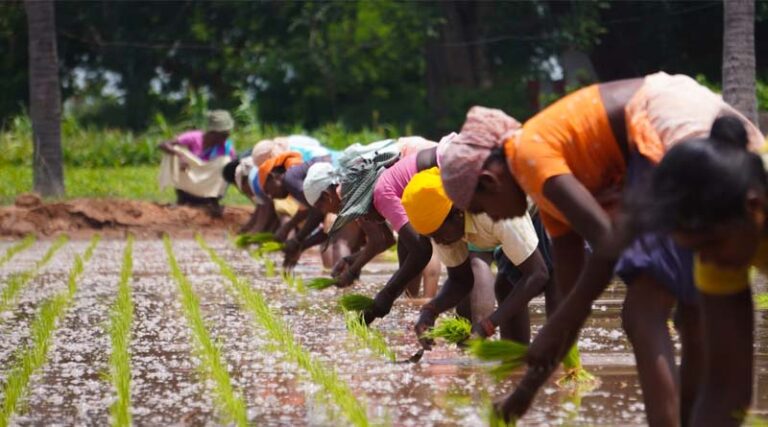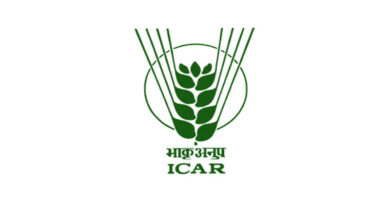
Govt Hikes MSP for Kharif 2025-26: Big Boost for Oilseeds, Cotton & Millets
29 May 2025, New Delhi: In a move aimed at boosting farmer incomes and supporting crop diversification, the Cabinet Committee on Economic Affairs chaired by Prime Minister Narendra Modi has approved an increase in the Minimum Support Prices (MSP) for 14 Kharif crops for the 2025-26 marketing season. The announcement aligns with the government’s continued focus on ensuring that MSPs are at least 1.5 times the cost of production.
Among all crops, the sharpest rise in absolute terms was seen in nigerseed, which saw an increase of ₹820 per quintal compared to last year. It was followed by ragi (₹596), cotton (medium staple) (₹589), and sesamum (₹579). These increases reflect the government’s broader push towards supporting oilseeds and nutri-cereals, in addition to traditional staples.
Strong Support for Key Crops
The MSP for paddy (common), one of India’s most cultivated Kharif crops, has been increased by ₹69 to ₹2,369 per quintal. The Grade A variety also received a similar increase, rising to ₹2,389 per quintal. While the hike may seem modest in comparison to other crops, the stability in paddy pricing is seen as a measure to maintain food inflation in check while still ensuring fair returns to farmers.
For soybean (yellow), another key crop especially in central India, the MSP has been raised by ₹436 to ₹5,328 per quintal. This 8.9% rise is significant in light of rising input costs and erratic rainfall patterns, and is expected to encourage farmers to continue allocating acreage to this vital oilseed crop.
Cotton, a major commercial crop particularly in Maharashtra, Gujarat, and Telangana, has seen an increase of ₹589 in its MSP. The new rates stand at ₹7,710 per quintal for medium staple and ₹8,110 for long staple cotton. With international cotton prices under pressure, this domestic support is seen as crucial to stabilize farmer incomes and ensure procurement support.
Crop-wise MSP Comparison (2024-25 vs 2025-26)
| Crop | MSP 2024-25 (₹/quintal) | MSP 2025-26 (₹/quintal) | Increase (₹) |
|---|---|---|---|
| Nigerseed | 8,717 | 9,537 | 820 |
| Ragi | 4,290 | 4,886 | 596 |
| Cotton (Medium) | 7,121 | 7,710 | 589 |
| Sesamum | 9,267 | 9,846 | 579 |
| Soybean (Yellow) | 4,892 | 5,328 | 436 |
| Sunflower Seed | 7,280 | 7,721 | 441 |
| Tur (Arhar) | 7,550 | 8,000 | 450 |
| Urad | 7,400 | 7,800 | 400 |
| Groundnut | 6,783 | 7,263 | 480 |
| Maize | 2,225 | 2,400 | 175 |
| Paddy (Common) | 2,300 | 2,369 | 69 |
Push for Crop Diversification and Nutri-Cereals
The government continues to promote the cultivation of nutri-cereals or Shree Anna, such as ragi, bajra, and jowar, to enhance nutritional security and climate resilience. Notably, ragi witnessed a 13.9% increase in MSP and remains a priority crop due to its high nutritional value and adaptability to arid conditions.
In addition, the rise in MSPs for oilseeds like sunflower, groundnut, sesamum, and nigerseed signals a policy shift towards reducing dependence on edible oil imports. These hikes also support the National Mission on Edible Oils and the broader Atmanirbhar Bharat (self-reliant India) initiative.
Margins Over Cost of Production
According to official estimates, the MSP for bajra offers the highest return over cost at 63%, followed by maize and tur, both offering a 59% margin. Urad has a 53% margin, while the remaining crops provide farmers with a minimum of 50% return above their production costs.
These margins are calculated based on a comprehensive cost structure that includes all paid-out expenses such as labor, inputs, land lease rent, irrigation, and the imputed value of family labor.
Looking Ahead
This timely revision in MSPs is expected to provide price assurance to farmers before the sowing of Kharif crops begins in June. By ensuring predictable returns, the government hopes to bolster rural incomes, reduce farmer distress, and sustain food and oilseed production momentum across the country.
While MSP is only one part of the support system, its implementation — particularly in crops where procurement remains weak — will be crucial. Policy watchers and farmer bodies will closely monitor how procurement agencies and states facilitate actual purchase at MSP, especially in oilseeds and pulses.
As India moves into another crucial monsoon season, this revised MSP structure sets the stage for a balanced kharif crop mix and highlights the policy push towards sustainable and remunerative agriculture.
Also Read: Insecticides India Limited (IIL) Launches New Herbicide Altair for Paddy Farmers in India
📢 Reach Farmers, Share Your Story, and Grow Your Brand!
Got news to share? A company story to highlight? Looking to launch an impactful advertising campaign? Connect with us at info@krishakjagat.org or nimishgangrade@krishakjagat.org and make your mark!
📢 Connect with 100+ Million Farmers! India’s leading farmers rely on Krishak Jagat’s Hindi website for trusted agriculture news, advisory and insights. Click here to explore!






